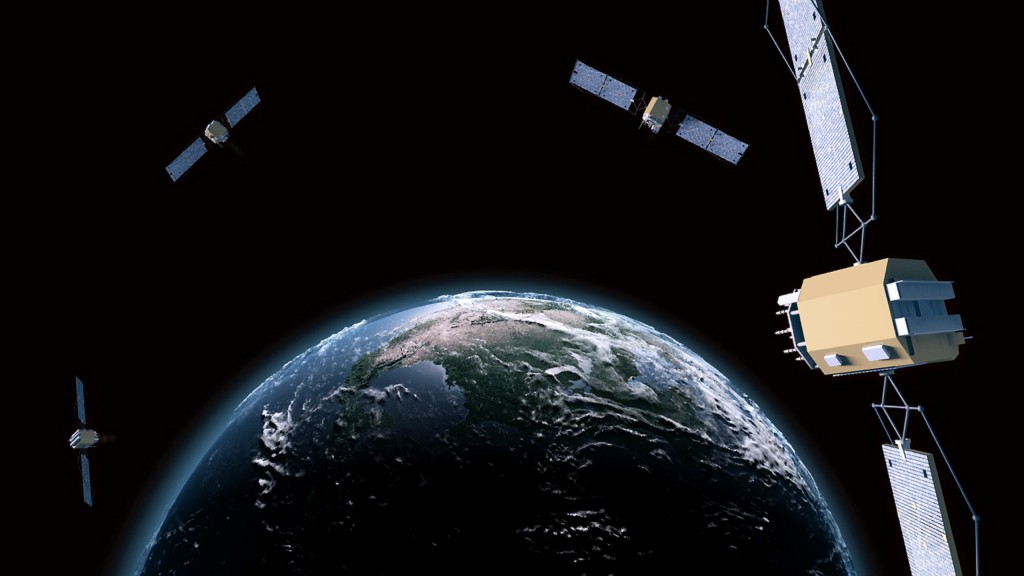100 Years of General Relativity
- By Barb Mattson
- November 25, 2015
- Comments Off on 100 Years of General Relativity
This week is the 100th anniversary of Einstein’s theory of general relativity. On November 25, 1915, Einstein published the field equations of gravity which are the heart of the general relativity.
Sure, you’ve heard of Einstein – he was a smart guy. And you’ve probably heard of general relativity, but what does it mean? And, maybe more importantly, why should you care?

Einstein’s general relativity equations were first published on November 25, 1915 in the Proceedings of the Royal Prussian Academy of Science. Having trouble reading the page? It’s in German! The title translates to: “The field equations of gravitation.” Credit: Proceedings of the Royal Prussian Academy of Sciences, Berlin
For over two centuries before Einstein, gravity was described by Newton’s law of universal gravitation. If you took physics in high school, you probably learned about this one. You maybe even did an experiment calculating the acceleration due to gravity of a falling object on Earth (you might even remember that it’s 9.8 meters/second2). It turns out that Newton’s formation of gravity works perfectly well for most practical purposes here on Earth.
But, in 1905, Einstein published his theory of special relativity, which showed that space and time were interwoven as a single structure he dubbed space-time. Then, over the next decade, he worked to incorporate gravity into this picture. The result was general relativity.
At its most basic, general relativity is a way to describe gravity by attributing it to the curvature of space-time that occurs in the presence of massive bodies. Massive objects cause space-time to stretch. One way to think about it is to imagine stretching a piece of fabric between a couple of people, and then plunking down a softball in the middle. The ball will make a dent in the cloth. Then if you roll a small ball across the fabric, it will seem to be attracted to the softball, though it’s really just following the dent in the cloth. It’s not a complete picture of how gravity and general relativity work, but it’s a good way to start to wrap your head around Einstein’s theory.

Massive objects cause space-time to curve, much like a heavy ball will create a well in a stretched-out piece of fabric. (Credit: NASA/GSFC/J. Friedlander)
Einstein realized that the traditional gravitational field can be understood as the motion of particles – stars, planets, and even light – on the stretched and curved surface of space-time.
While the concept sounds simple, the formulation of general relativity is complex. One reason that general relativity seems so foreign to us is that its effects are subtle from our perspective. They only come into play if you want to make very precise measurements of gravity, if you are traveling at close to the speed of light, or if you happen to find yourself in an area of extreme gravity (like very, very close to a black hole).
There is one place, though, where you do encounter relativity on a day-to-day basis. You know that smartphone in your pocket? The one you use to map your way to a new restaurant? Or to tag your location in a picture? It depends on GPS technology, which needs general and special relativity to work properly.
GPS uses radio signals from a network of satellites orbiting Earth at an altitude of 20,000 km to pinpoint the location of a GPS receiver. The accuracy of GPS positioning depends on precision in time measurements of billionths of a second. To achieve such timing precision, however, relativity must be taken into account.

A network of Global Positioning Satellites (GPS) transmit radio signals to pinpoint the location of GPS receivers (like your smartphone) on Earth’s surface. (Credit: NASA/GSFC)
Special relativity shows that if we place a clock on a satellite and compare its recorded time to an identical clock in our rest frame on Earth, the satellite’s clock will appear to be running behind. For the GPS satellites, this difference amounts to about 7 microseconds per day. On the other hand, general relativity shows that those same clocks will tick 45 microseconds per day faster.
The combined effect of relativity is that the satellites’ clocks tick faster by about 38 microseconds each day. That sounds like a tiny amount – what difference could that make? Well, unless these relativistic effects are accounted for, the errors would accumulate at about 10 km per day. And that new restaurant you wanted to try? It would not be anywhere near where the GPS thought it should be!
LINKS:
* Doing Astronomy With Our Eyes Closed (Blueshift guest blog by Ira Thorpe)
* Who Cares About Gravity? (Blueshift guest blog by Umburto Cannella)



